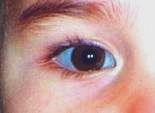- Clinical Technology
- Adult Immunization
- Hepatology
- Pediatric Immunization
- Screening
- Psychiatry
- Allergy
- Women's Health
- Cardiology
- Pediatrics
- Dermatology
- Endocrinology
- Pain Management
- Gastroenterology
- Infectious Disease
- Obesity Medicine
- Rheumatology
- Nephrology
- Neurology
- Pulmonology
Physical Abuse-or Mimic?
A childhood filled with multiple fractures and unending ED visits convinced this young woman that she would not give birth to children of her own.
A young woman I work with told me recently that she still remembers the trauma from the many broken bones she experienced during her childhood. She was so traumatized by the frequent fractures and emergency department (ED) visits that she did not want children of her own. She recounts that fractures often happened on vacation and she would end up in an unfamiliar hospital. She recalls the ED doctor always asked the appropriate questions but always came to the same conclusion. She also recalls talking to social workers, in a room separate from her parents, and they came to the same conclusion based on what her mother told them.
Was this woman abused as a child or is there another possible explanation?
Click here for answer and Discussion...
Answer: This was not a case of physical abuse. The fractures were secondary to osteogenesis imperfecta.
Actually, this was a good outcome and the conclusions were correct. The ED doctors would ask about prior fractures and whether there was a family history of fractures. The mother would go through the history of her own fractures, as a child and as an adult, as well as recount her daughter’s history. The doctor would make a phone call to the private doctor and the history of osteogenesis imperfecta (OI) was confirmed. She recounts that the same cycle was repeated with her brother, also affected with OI. The ED doctors were correct in questioning the number of fractures as well as confirming the history of OI prior to discharge. The social workers were correct to separate the children from the parents and question the children alone about abuse while waiting for the call back from the private doctor.
The diagnosis of OI and abuse may coexist, but that presentation is not typical. OI is a rare genetic disease that affects 1 in every 10,000 to 15,000 births. There are 4 well-known, classic types of OI. These types are distinguished mostly by fracture frequency and severity and by characteristic features. Three additional types of OI (types V, VI, and VII) have also been identified that do not present with classic symptoms. The diagnosis is dependent on clinical factors, family history, and genetic/fibroblast evaluation.

One of the most common physical findings is blue sclera, seen in the Figure. Blue sclera is seen in approximately 90% of OI patients but the anomaly also may be seen with other connective tissue disorders, iron deficiency, and in normal children. Other physical signs include a triangular facies, chest deformities, and joint laxity. Wormian bones are seen in 60% of skull x-ray films in OI patients but may be seen in 10% of normal patients as well.1,2 Multiple bone and joint deformities may also be seen in OI. Other signs of OI include hearing loss and dental abnormalities.
The differential diagnosis for OI includes metabolic diseases (ie, Paget disease), endocrinopathy (ie, Cushing disease), chronic renal disease, nutritional deficits, and always, abuse.
The patient is now 37 years old and has not had a fracture since she was 25 years old. She is employed as a nurse. She has chosen not to continue the OI genetic line and has adopted 2 children. She is grateful for the doctors’ due diligence in excluding abuse with all her fractures.
For a brief review of current literature regarding OI, see the additional suggested reading listed below (subscriptions may be required).
References
1. Starr SR, Roberts TT, Fischer PR. Osteogenesis imperfecta: primary care. Pediatr Rev. 2010;31:e54-e64.
2. Marti B, Sirinelli D, Maurin L, Carpentier E. Wormian bones in a general population. Diagn Interv Imaging. 2013;94:428-432.
Suggested reading
• Khandanpour N, Connolly DJA, Raghavan A, et al. Craniospinal abnormalities and neurologic complications of osteogenesis imperfecta: imaging overview. Radiographics. 2012;32:2101-2112.
• Greenly C, Donaruma-Kwoh M, Vettimattam M, et al. Fractures at diagnosis in infants and children with osteogenesis imperfecta. J Pediatr Orthop. 2013;33:32-36.
AI-Powered Diabetes Prevention Program Intervention Matches Human Coaching in Landmark Trial
October 27th 2025After 1 year of coaching by the AI app or a DPP-associated coach, reductions in weight and HbA1c and increases in physical activity were equal, an outcome with great promise for scalability.
